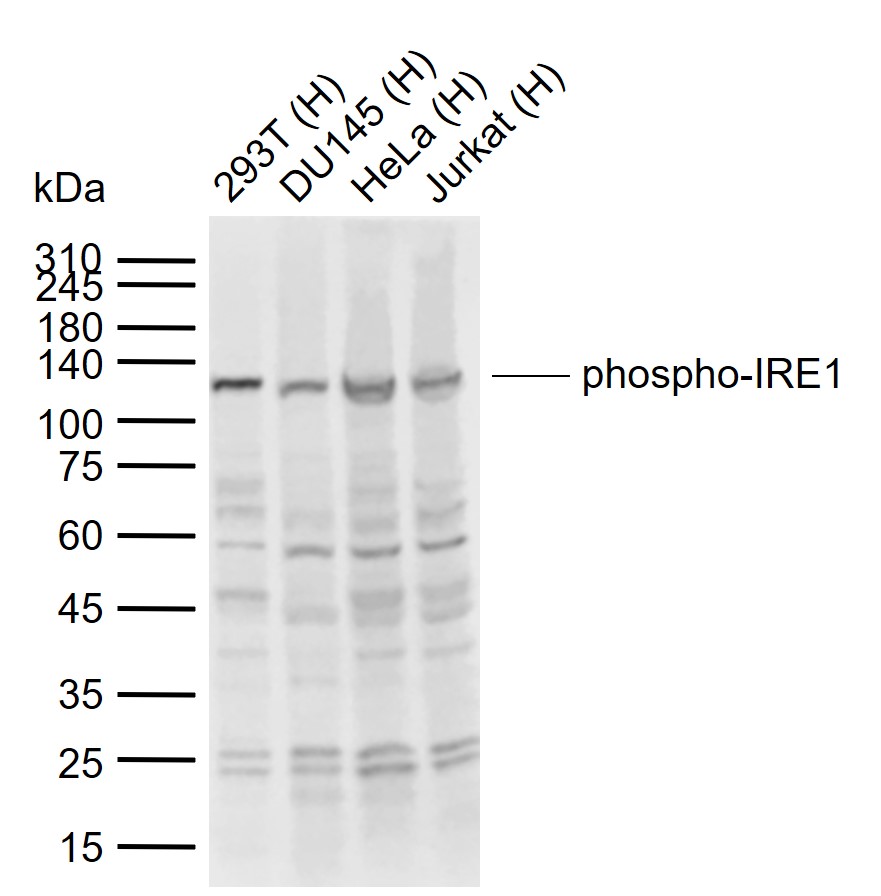sales@bioss.com.cn
techsupport@bioss.com.cn
400-901-9800
Host: Rabbit
Target Protein: phospho-IRE1 (Ser724) Rabbit pAb
IR: Immunogen Range:RH(p-S)FS
Clonality: Polyclonal
Isotype: IgG
Entrez Gene: 10595
Swiss Prot: O75460
Source: KLH conjugated synthesised phosphopeptide derived from human IRE1 around the phosphorylation site of Ser724:RH(p-S)FS
Purification: affinity purified by Protein A
Storage: 0.01M TBS (pH7.4) with 1% BSA, 0.02% Proclin300 and 50% Glycerol. Shipped at 4℃. Store at -20℃ for one year. Avoid repeated freeze/thaw cycles.
Background: The accumulation of unfolded proteins within the endoplasmic recticulum (ER) of yeast and mammalian cells activates the unfolded protein response (UPR) pathway and leads to the transcription of ER-specific genes involved in protein folding. The activation of the UPR requires the ER transmembrane kinase IRE1p (for inositol-requiring and ER-to-nucleus signaling protein). IRE1α and IRE1β are two mammalian homologs of the yeast IRE1p. These related proteins localize to the ER lumen and contain both a short transmembrane domain that spans the ER membrane and a cytosolic Ser/Thr kinase domain. IRE1 activation involves the oligomerization and trans-phosphorylation of the cytosolic portion of the proteins, which then potentiates its intrinsic kinase activity and, in turn, stimulates transcription of UPR-targeted genes. In response to stress, sensors for the ER mammalian cells activate IRE1α and IRE1β, which then results in the phosphorylation of JNK (Jun N-Terminal Kinase) and the activation of the cellular MAP kinase pathway.
Size: 50ul
Concentration: 1mg/ml
Applications: WB=1:500-2000
Cross Reactive Species: Human,Mouse,Rat (predicted: Pig,Sheep,Cow,Horse)
For research use only. Not intended for diagnostic or therapeutic use.
